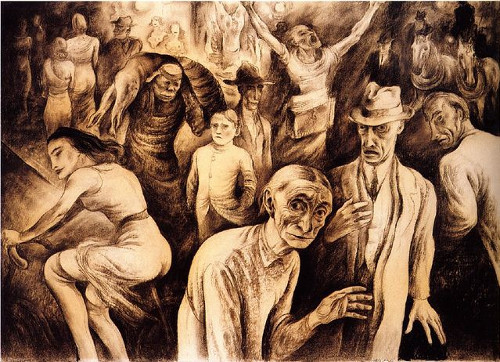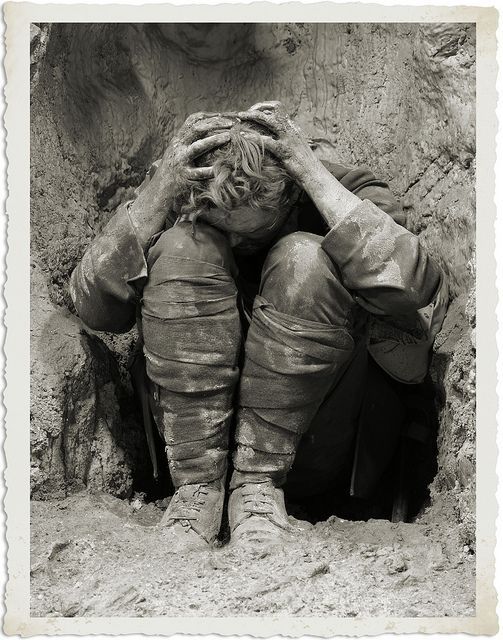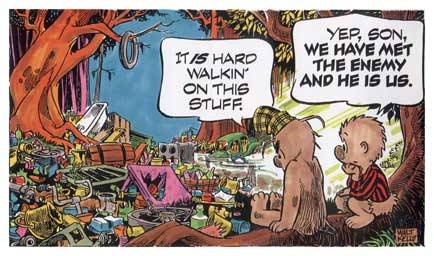Let’s Fry Chicken Little: the end-of-the-world hysteria in recent science fiction

At PERIHELION, Carol Kean laments the disturbing end-of-the-world hysteria that seems to permeate recent science fiction.
“SHIT IS FUCKED. WERE GOING DOWN.” You didn’t hear it here first, but you’ll see it in every other novel coming down the pike. It’s disturbing that end-of-the-world hysteria continues to sell so well across all genres, but downright distressing for dystopian themes to dominate science fiction.
Once upon a time, a Golden Age of Science Fiction gloriously explored the “what if?” These days, it’s “what if” corporate greed, GMOs, a mutant virus unleashed by mad scientists, totalitarian governments, and reckless developers destroy our beautiful world? Well, what if the future is bright, green and sustainable? Hollow out an asteroid, build cities inside it, colonize the solar system—yes! Yes! But does it have to be the last resort of dickwads who rape and permanently ruin our planet?

I’m with Kingsley Amis. If human progress seems too glacial, try studying medieval history. “The hydrogen bomb, the South African Government, Chioang Kaidick, Senator McCarthy himself, would then seem a light price to pay for no longer being in the Middle Ages” (“Lucky Jim,” 1954).
No place is ideal. Utopia (from the Greek ou-topia) means “no place.” Eutopia, which is also pronounced you-topia, is your own place perfected—a practical aspiration, not an impossible ideal (Wikipedia). Most people don’t seem to be working toward that. Instead, every generation frets over their wayward youth, laments that things were so much better back in the day, and warns that the end is nigh. Folks, the end has been nigh for thousands of years. If we could bottle the blood, sweat and tears shed for our imminent demise, we’d have a lot of snake oil to peddle.
The world is full of bad places, but dystopia—i.e., a really, really bad place—hasn’t gone global. The coming apocalypse hasn’t come. There’s hell to pay for no end of offenses against the planet and its people, but do we have to dwell on it? What are we so afraid of? Walt Kelly (creator of the “Pogo” comic strip) famously wrote “we have met the enemy, and he is us,” but Kelly didn’t go on a binge of dystopian cartooning.

Chicken Little Syndrome may not have a place in the DSM-5 Manual of psychological disorders, but it spreads faster than Bird Flu and Ebola. The chicken story began twenty-five centuries ago as a rabbit, by the way. The wise Buddha was trying to teach people to keep cool and carry on, as we say today. In his parable, a rabbit hears the noise of a falling fruit and instigates a stampede among the other animals—“the world is coming to an end!”—until a lion halts them, investigates the cause of the panic and restores calm.
I like that lion. I like his lesson on the value of deductive reasoning and investigation.
Three thousand years later “keep cool and carry on” gets Tweeted and printed on coffee mugs, along with the latest warning signs of imminent global disaster. Chicken Little, however, drowns out the Buddha’s reminder to face calamity with reason and calm. You’d think the sky really is falling, or filling up with fluorocarbons and carbon dioxide, which just goes to show what a blight on Earth we are; and if you doubt that, there’s a Voluntary Human Extinction movement eager to show you how much better Earth would be without us. They don’t deserve any attention, I think.
Read the rest of Kean’s interesting essay at PERIHELION.

